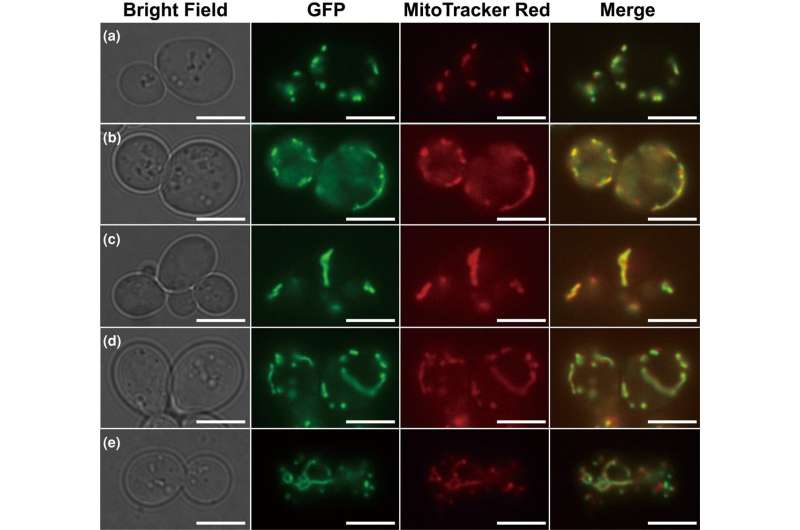This article has been reviewed according to Science X's editorial process and policies. Editors have highlighted the following attributes while ensuring the content's credibility:
fact-checked
trusted source
proofread
Discovery of primitive mitochondrial DNA replication enzymes

Researchers led by University of Tsukuba have discovered rdxPolA, a putative DNA polymerase involved in replicating ancestral mitochondrial genomes, in diverse eukaryotic lineages. Based on the phylogenetic distribution of rdxPolA among eukaryotes, they proposed an evolutionary scenario of DNA polymerases for mitochondrial genome maintenance in the early evolution of eukaryotes.
Mitochondria are intracellular organelles that evolved from a bacterium belonging to Alphaproteobacteria, which was taken up as an endosymbiont by the common ancestor of eukaryotes. Mitochondria possess their own highly reduced genomes (known as mitochondrial genomes), which are principally the descendants of the genome of the α-proteobacterial symbiont. Phylogenetically diverse eukaryotes use a type of DNA polymerase called "POP" to maintain their mitochondrial genomes.
In this study, published in Molecular Biology and Evolution, the researchers identified 10 novel types of DNA polymerase that are distinct from the previously known types, including POPs, across diverse eukaryotic lineages. The evolutionary origin and subcellular localization of each novel DNA polymerase were investigated.
Intriguingly, one of the DNA polymerases identified in this study, rdxPolA, was found to be involved in mitochondrial DNA maintenance and is a direct descendant of the DNA polymerase in the α-proteobacterial symbiont that gave rise to the first mitochondrion.
The researchers proposed a scenario for the evolution of DNA polymerases involved in mitochondrial DNA maintenance from primitive to extant eukaryotes.
These findings provide critical insights into the early evolution of the machinery for mitochondrial DNA maintenance and the establishment of mitochondria in primitive eukaryotic cells.
More information: Ryo Harada et al, Encyclopedia of Family A DNA Polymerases Localized in Organelles: Evolutionary Contribution of Bacteria Including the Proto-Mitochondrion, Molecular Biology and Evolution (2024). DOI: 10.1093/molbev/msae014
Provided by University of Tsukuba





















